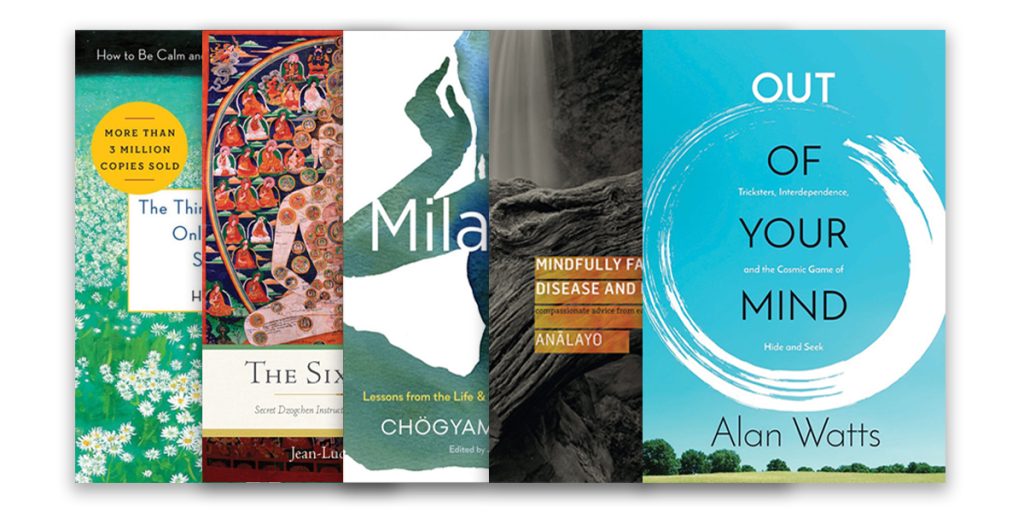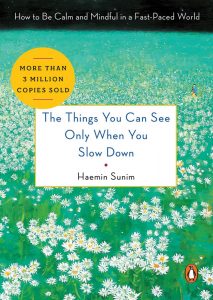
The Things You Can See Only When You Slow Down: How to Be Calm and Mindful in a Fast-Paced World (Penguin Books, February 2017; $18.00, 288 pp., cloth), which sold over three million copies in Korea, the home country of its author, Buddhist monk Haemin Sunim, is now available in English. Divided into eight chapters that address broadly defined topics like relationships and rest, passion and the future, the collection comprises a series of short teachings that the media-savvy monk, a former advice columnist for the Korea Times, originally shared via Twitter and Facebook. While each teaching is only slightly longer than your average InstaQuote, the content is far more meaningful, often drawing on metaphors from contemporary life. The accessibility of these memorable mini-teachings has likely led to the book’s runaway success; they take only a minute to read: “A bad driver brakes often. A bad conversationalist also brakes often—interrupting the flow with his own stories.”
This small book is perfect for the bedside. You might start the day with one short teaching and close it with another, or you could give it as a gift to friends or family members who are curious about Buddhism and looking for an unintimidating place to start.
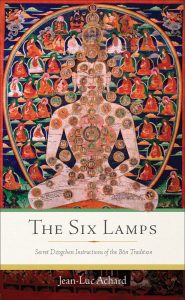
Few texts from the Tibetan Bon tradition, the indigenous religion of Tibet before the arrival of Buddhism, are available in English today, which makes the recent translation of The Six Lamps: Secret Dzogchen Instructions of the Bon Tradition (Wisdom Publications, March 2017; 340 pp., $15.95, paper) particularly valuable. Translated by Tibetologist Jean-Luc Achard, editor and
publisher of the Revue d’Etudes Tibetaines, The Six Lamps includes central teachings from one of Bon’s root texts, The Oral Transmission of Zhangzhung (Zhangzhung Nyengyü), which outlines the return to conditioned existence (if one has failed to recognize one’s true nature) via the death process and bardo states.
The book also describes the Dzogchen teachings known as trekcho (“cutting through”) and thogel (“crossing the crest” or “leap over”); the latter instruction, a rapid method for attaining awakening, is usually held to be an extremely secret practice.
 Before the 11th-century Tibetan yogi Milarepa became one of the world’s best-known meditation practitioners and teachers, he was a mass murderer. As a young man, Milarepa used black magic to annihilate his aunt and uncle’s family—a greedy bunch who had enslaved Milarepa and his mother after his father died—and only later, when remorse caught up with him, did he seek out the Buddhist master Marpa to study with him and attain liberation.
Before the 11th-century Tibetan yogi Milarepa became one of the world’s best-known meditation practitioners and teachers, he was a mass murderer. As a young man, Milarepa used black magic to annihilate his aunt and uncle’s family—a greedy bunch who had enslaved Milarepa and his mother after his father died—and only later, when remorse caught up with him, did he seek out the Buddhist master Marpa to study with him and attain liberation.
Milarepa’s story, well-known in Tibet, was popularized in the West in no small part by Chögyam Trungpa Rinpoche, who hoped that spreading the story would inspire his students to embody the teachings of the Buddha rather than approach them intellect-first. Based on a series of seminars on the sage’s life that Trungpa Rinpoche conducted in the 1970s, the first half of Milarepa (Shambhala Publications, March 2017; 304 pp., $19.95, paper) elucidates major topics from the Kagyu tradition to which the yogi belonged, such as lineage, devotion, nontheism, and retreat practice, while the second half of the book contains Milarepa’s celebrated songs. Guaranteed to be a hit in the Shambhala community, Buddhist practitioners of all stripes will find Milarepa engaging.
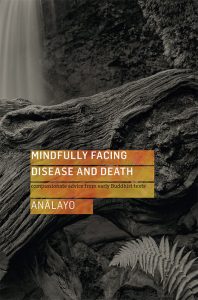
In his foreword to Mindfully Facing Disease and Death: Compassionate Advice from Early Buddhist Texts (Windhorse Publications, October 2016; 283 pp., $19.95, paper), Jon Kabat-Zinn points out that the Buddha is sometimes referred to as the physician of the world—the four noble truths were articulated in a classical medical formula that is still applied today: diagnosis, etiology, prognosis, and treatment. In this anthology, the scholar-monk Bhikkhu Analayo presents texts from the Buddha’s early discourses to give a firsthand account of what Buddhism has to say about illness, death, and dying, and offers his own translations from the Chinese Agama collection alongside parallel texts from the Pali canon. The book covers 24 related themes, such as reducing pain; fearlessness when sick; mindfully facing disease; advice on palliative care; and mindful dying. Each section includes an introduction, the translation, and a discussion, contextualizing each teaching in depth (although the content may be difficult for beginners to follow). For those practitioners steeped in the dharma whose goal is to assist suffering patients in hospitals, nursing homes, and hospices, however, the volume may prove indispensable.
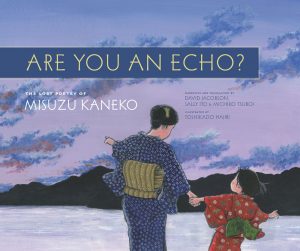
Here’s an illustrated children’s book that isn’t just for kids. Are You an Echo? The Lost Poetry of Misuzu Kaneko (Chin Music Press, September 2016; $19.50, 64 pp., cloth) tells the life story of the Japanese poet Misuzu Kaneko, interwoven with her verses. Born in a fishing village in 1903, Misuzu began writing poetry as a child; her work is marked by a sense of compassion, so common in children, but so easily lost in adults, that extends to animals, plants, and inanimate objects. One example is her poem “Snow Pile”:
Snow on top
must feel chilly,
the cold moonlight piercing it.
Snow on the bottom
must feel burdened
by the hundreds who tread on it.
Snow in the middle
must feel lonely
with neither earth nor sky to look at.
Misuzu’s work is still treasured in Japan today, and her poems appear on the curriculum in many elementary schools. But not much was known about her life until the 1980s, when an ardent reader tracked down her brother, who was in possession of Misuzu’s diaries and notebooks. Misuzu’s life ended tragically—she committed suicide, most likely in response to an abusive marriage—but this heartbreaking outcome should deter neither young nor old readers, both of whom will appreciate her life’s narrative and accompanying verses.
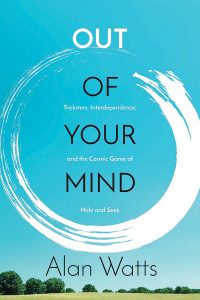
“There are basically two kinds of philosophy: prickles and goo,” Alan Watts tells us in Out of Your Mind: Tricksters, Interdependence, and the Cosmic Game of Hide and Seek (Sounds True, March 2017; $16.95, 192 pp., paper). “Prickly people are precise and logical—they like everything chopped up and clear. Goo people like it vague.” And we might add, there are two kinds of Buddhist readers: scholars and beats. Scholars are serious and demanding—they like everything explained, cited, and organized. Beats don’t really mind what the style is, as long as the teacher presents his material in an impassioned way. Out of Your Mind will appeal to readers in both camps.
The British philosopher, writer, and speaker Alan Watts was known for his clear and appealing interpretations of Eastern philosophies for Western audiences. He gained a popular following during the 1950s through his talks on the public radio station KPFA in Berkeley; his 1957 book The Way of Zen remains one of the most influential books on the topic for Western readers. This new book is made up of a series of lectures from the late 1960s and early ’70s compiled by his son Mark Watts, covering a range of material from the nature of consciousness and “web of life” to world as self and world as emptiness. Watts’s humorous, irreverent style pervades the text; it will please his fans, and even those who prefer a more classical approach to their Buddhist study will value his in-depth understanding.
Thank you for subscribing to Tricycle! As a nonprofit, we depend on readers like you to keep Buddhist teachings and practices widely available.
